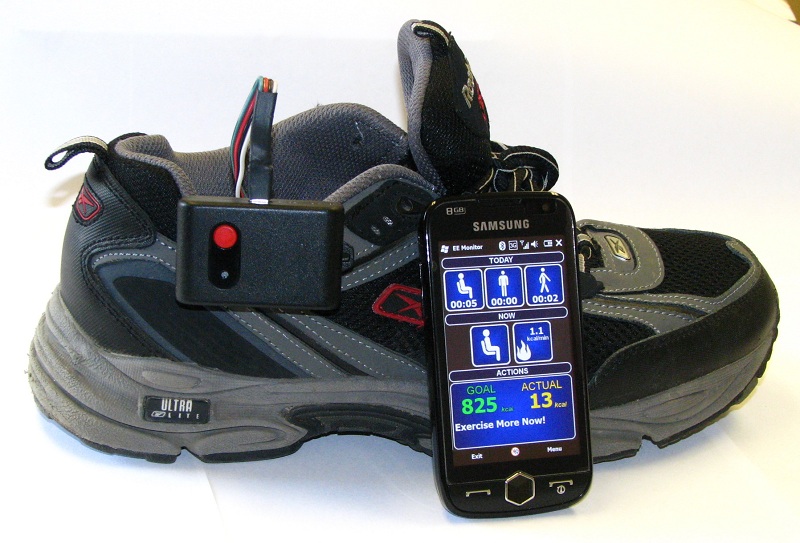 |
Wearable Biofeedback from Footware (SmartShoe/SmartStep) |
This project aims at creation of wearable biofeedback devices fully integrated into conventional footware. We pursue the following applications:
- assessment and mitigation of risk of falling
- accurate measurement of energy expenditure
- rehabilitation of stroke patients
- evaluating the risk of falling
- better control of prostetic devices
Journal Publications
- Using Sensors to Measure Activity in People with Stroke
- Identifying Activity Levels and Steps in People with Stroke using a Novel Shoe-Based Sensor
- Prediction of Bodyweight and Energy Expenditure Using Point Pressure and Foot Acceleration Measurements
- Automatic Detection of Temporal Gait Parameters in Post-stroke Individuals
- Accurate Prediction of Energy Expenditure Using a Shoe-Based Activity Monitor
- Monitoring of posture allocations and activities by a shoe-based wearable sensor
- Wearable Shoe-Based Device for Rehabilitation of Stroke Patients
Refereed Conference Publications
- Development of SmartStep: an insole-based physical activity monitor
- Using Decision Trees to Measure Activities in People with Stroke
- Recognition of Household and Athletic Activities using SmartShoe
- Highly accurate classification of postures and activities by a shoe-based monitor through classification with rejection
- Classification of Posture and Activities by Using Decision Trees
- Characterizing Walking Activity in People with Stroke
- Wearable Shoe-Based Device for Rehabilitation of Stroke Patients
- Development of a novel shoe based sensor to identify postural allocations in people with stroke
- Automatic Recognition of Postures and Activities in Stroke Patients
- Automatic recognition of postural allocations
- Identification of gait types from plantar pressure and heel acceleration data
First SmartShoe experiments
The aim of this study was to investigate how age-related decreases in proprioceptive abilities and associated risk factors for falls and injury in the elderly can be compensated for by a biofeedback device. The biofeedback device would ultimately be used during daily functional activities to decrease morbidity and mortality associated with falls and dependency in the elderly.
The goal of the current pilot study is demonstrating that analysis of time-varying plantar pressure and acceleration patterns can create computational intelligence to identify situations where a person exhibits abnormal postural control. This methodology for detecting abnormal postural control can then be used to design a biofeedback device to compensate for age-related proprioceptive loss. This research project was originated in collaboration with S. Zeigler and S.Marocco from Physical Therapy department of Clarkson University. Our first prototype was manufactured in CLAWS lab using a pressure-sensitive insole that we designed and a wireless 2D accelerometer.
Sensor shoe video
Gait Pattern Recognition
Using this prototype we were able to recognize 5 different activities performed by the subject:
1. Normal standing posture
2. Simulated geriatric standing with most of the body weight shifted to the heels
3. Normal gait
4. Simulated geriatric gait (less pronounced heel strike)
5. Simulated "tip-toe" walking





Currently we are working on collecting the data from human subjects using our second generation device. The motion of a heel in space is tracked using 6 degree of freedom wireless inertial tracker, comprised of a low-noise 3D accelerometer and a 3D gyroscope. The data are delivered wirelessly to a PC. The data samples are synchronized between multiple wireless devices on the order of a few microseconds. Plantar pressure distribution is captured using FScan mobile.
Using acquired data and techniques of computational intelligence we are planning to recognize and quantify various activities performed by subjects.
6DOF wireless sensor


